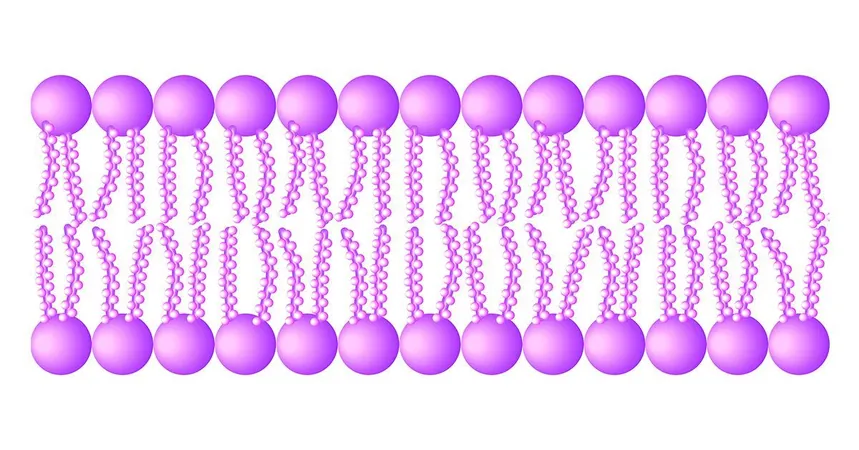
Unraveling the Secrets of Life's Origins: Scientists Create Synthetic Cells
2025-07-17
Author: John Tan
The Age-Old Mystery of Life's Genesis
How did inorganic matter transform into organic life? This question has baffled humankind for centuries, sparking curiosity in scientists worldwide. Recent advancements have allowed researchers to dive deeper into this enigma by crafting synthetic cells that mimic real ones, offering potential insights into the early stages of life on Earth.
The Building Blocks of Life
Life isn't easy to define, but three essential elements commonly emerge in biological discussions: compartmentalization, metabolism, and selection. Compartmentalization involves barriers that separate a cell's interior from its surroundings. Metabolism refers to the intricate processes of constructing and breaking down molecules vital for cellular functions, while selection denotes how certain molecules prevail over others in evolution.
New Research Focuses on Metabolism
Historically, many researchers concentrated on compartmentalization, often neglecting metabolism. However, this metabolic cycle plays an integral role in how living organisms react to their environments, reproduce, and evolve.
A Breakthrough at UC San Diego
A team at the University of California San Diego has achieved a significant milestone by developing a system that not only synthesizes cell membranes but also incorporates metabolic activities. Their groundbreaking work, featured in the June 2025 issue of Nature Chemistry, pushes the boundaries of our understanding of life's origins.
Neal Devaraj, the principal investigator and Murray Goodman Endowed Chair in Chemistry and Biochemistry at UC San Diego, states, "Cells without metabolic networks are stagnant; they cannot grow, remodel, or divide. Our goal is to determine if metabolism can function in simple chemical systems, predating the emergence of complex life forms."
Lipids: The Unsung Heroes of Cellular Function
Lipids, the fatty compounds forming essential cell structures, are pivotal in biological processes. In living cells, lipid membranes act as dynamic barriers, restructuring themselves to meet cellular needs.
Exploring Primitive Cellular Mechanisms
Devaraj’s lab creatively designed a system where lipids not only form membranes but also break them down through metabolic actions, all from nonliving matter. This innovative approach is crucial for understanding how life could have emerged on the prebiotic Earth.
As postdoctoral researcher Alessandro Fracassi emphasizes, "We aim to uncover the minimal systems exhibiting life-like properties."
A Revolutionary Chemical Cycle
The research team engineered a chemical cycle using fuel to activate fatty acids, which then generate phospholipids. These spontaneously form membranes, which can dissolve and reform—essentially restarting their lifecycle.
Building Blocks of Life One Layer at a Time
The ultimate goal is to layer additional complexities onto their synthetic cell structure, inching closer to creating a functional replica of primitive life forms. Fracassi explains, "We possess extensive knowledge about living cells, yet we lack a complete understanding of how their components mesh to create functional units. Our mission is to painstakingly recreate a primitive yet functional cell, one layer at a time."
Real-World Implications of Synthetic Life
Beyond illuminating the origins of life, the creation of artificial cells has the potential to revolutionize various fields. From drug delivery systems to environmental clean-up methods, the applications are vast and exciting.
Devaraj cautions that while we may not see tangible advancements for a couple of decades, the groundwork laid today is crucial for unlocking future possibilities.
"We have so much more to learn, and this exploration is just beginning," he concludes.
 Brasil (PT)
Brasil (PT)
 Canada (EN)
Canada (EN)
 Chile (ES)
Chile (ES)
 Česko (CS)
Česko (CS)
 대한민국 (KO)
대한민국 (KO)
 España (ES)
España (ES)
 France (FR)
France (FR)
 Hong Kong (EN)
Hong Kong (EN)
 Italia (IT)
Italia (IT)
 日本 (JA)
日本 (JA)
 Magyarország (HU)
Magyarország (HU)
 Norge (NO)
Norge (NO)
 Polska (PL)
Polska (PL)
 Schweiz (DE)
Schweiz (DE)
 Singapore (EN)
Singapore (EN)
 Sverige (SV)
Sverige (SV)
 Suomi (FI)
Suomi (FI)
 Türkiye (TR)
Türkiye (TR)
 الإمارات العربية المتحدة (AR)
الإمارات العربية المتحدة (AR)